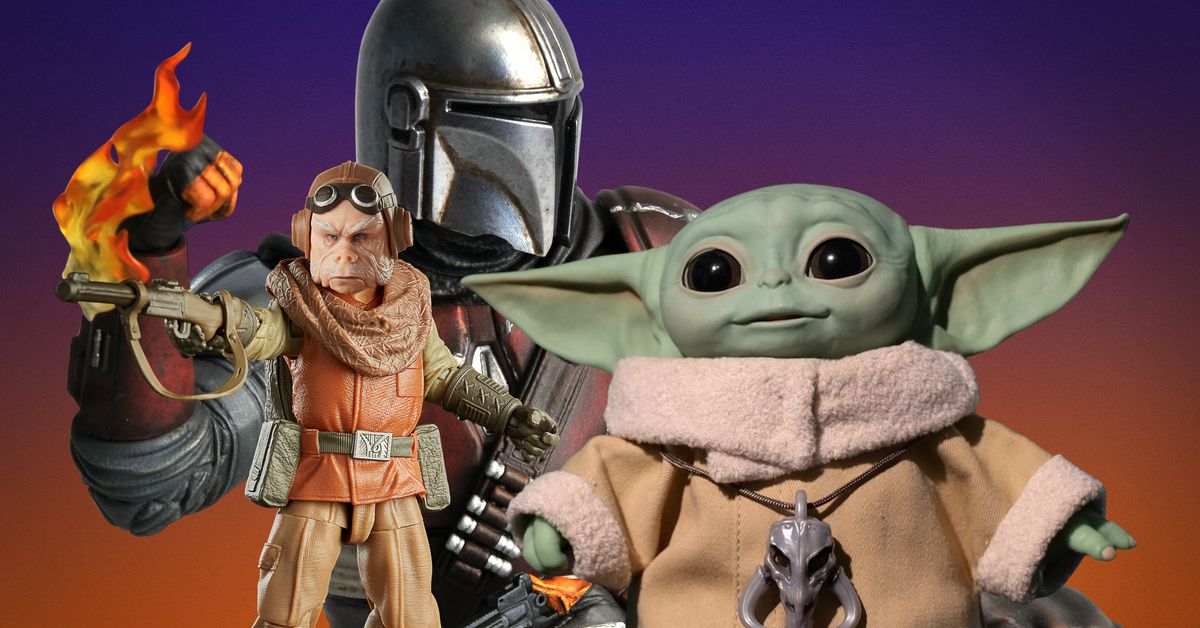
Collectors are the target market of a franchise that once courted imagination
When the nine-movie Skywalker Saga concluded in 2019 with The Rise of Skywalker, another ending came, with far less fanfare: Skywalker was the first Star Wars theatrical release that didn’t have its own action-figure line. A few characters were available at various sizes and price points, but the usual lineup of 10 or 20 characters and playsets were nowhere to be found. It was a strangely anticlimactic end to one of the most successful, longest-running merchandising campaigns of all time.
A year later, plans for a massive slate of Star Wars storytelling is years away, and even the much-hyped Obi-Wan Kenobi limited series won’t start shooting until March at the earliest. The Mandalorian has been keeping interest in the franchise active — and that extends to Star Wars products, which, if anything, seem more ubiquitous than they did in the run-up to Rise of Skywalker. But as the franchise’s toys enter middle age, they’ve lost the galaxy-spanning weirdness that defined Star Wars action figures for decades.
Star Wars fan and toy collector Eddie Utrata grew up playing with the original-trilogy figures — the blocky, simple ones that debuted in the late ’70s, and famously prompted Christmas gifts of IOU slips promising toys to come, because manufacturers hadn’t produced enough to meet demand. Utrata has been collecting Star Wars in earnest since the late ’90s. “It’s a shame,” he says of the recent move away from 3.75-inch figures, “because the quality of the figures has never been better.”
Star Wars feels least like itself when it’s standing motionless on a shelf.
Those improved toys are aimed more at adult collectors with money to burn, and the patience to seek out action figures that aren’t mass-produced at the same level. Hasbro’s long-running Black Series produces detailed renditions of favorite characters at a six-inch scale and a price point around $25, roughly three times the going rate for smaller figures. There’s also a sort of junior version of the Black Series called the Vintage Collection, which brings a greater level of detail and articulation to the traditional 3.75-inch scale, at merely 150% of the cost.
Just to make things more confusing, there’s also a separate line called the Retro Collection, which is currently readying new Mandalorian characters in a style that more closely resembles the old-school action figures. Soon, fans will be able to own a Cara Dune or Kuiil figure that’s more or less in line with any old-school Star Wars figures they might have collected during that original era.
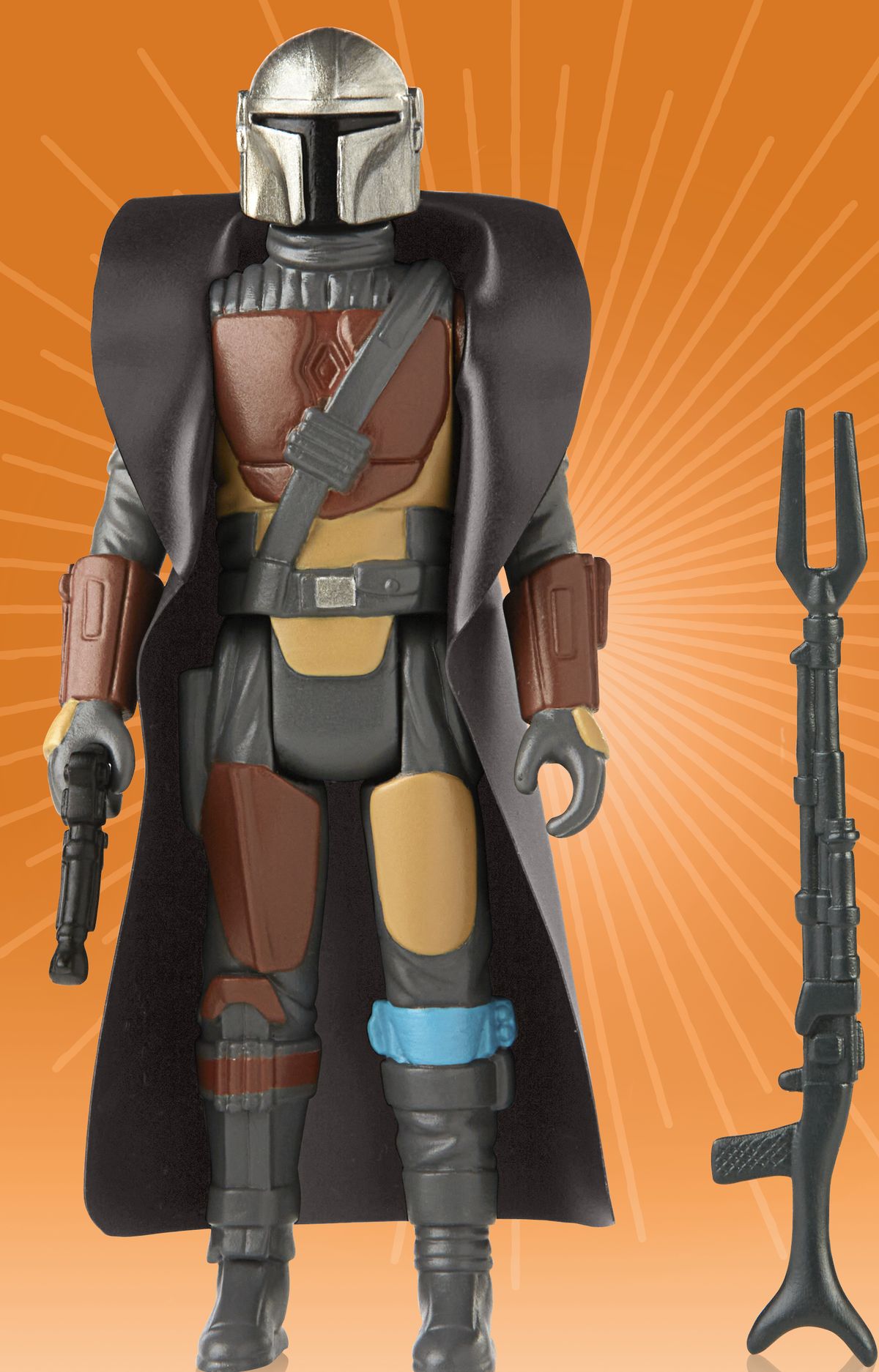
Star Wars’ “retro” Mandalorian figurePhoto: Hasbro
And Star Wars products keep coming at a furious rate. Throughout The Mandalorian’s second season, Lucasfilm and Hasbro have been participating in “Mando Mondays,” an extension of the “Force Fridays” that preceded the sequel-trilogy film releases. Each week, the companies jointly announce a new batch of Star Wars merch focusing on The Mandalorian, including apparel, home goods, and of course, toys. It’s a cornucopia of licensing that recalls so many all-media Star Wars blitzes of years past, with one crucial difference: The old-fashioned, affordable action figures that originated Star Wars merchandising in the popular consciousness, and essentially made George Lucas his fortune, are still largely missing.
Those earlier toy lines elevated ephemeral minor characters alongside the major ones, producing the kind of volume that can really populate a plastic galaxy. The Vintage Collection by design doesn’t produce dozens of characters at once, so it’s hardly a substitute; in 2019, it offered a scant handful of Rise of Skywalker figures, and has quickly moved on to filling out the most prominent members of the Mandalorian cast and re-releasing more familiar original-trilogy characters and the occasional prequel toys. Anyone looking for a full Rise of Skywalker human-and-creature ensemble, aiding the memorization of names barely or never spoken in the films (Klaud? Richard E. Grant’s General Pryde?) is out of luck.
For that matter, shorter-tenured Mandalorian characters like Timothy Olyphant’s Cobb Vanth don’t have 3.75-inch figures, either. “As nice as the Black Series figures are,” Utrata laments, “they can’t offer what the massive range of [traditional] figures does — a library of thousands, drawn from not just every Star Wars movie, but from deleted scenes, books, comic books, animated shows, and even concept art.”
For years, there have been signs that the traditional Star Wars action-figure line was shutting down. The Force Awakens, Rogue One, The Last Jedi, and Solo spawned new rosters of the traditional smaller figures, but the benches weren’t as deep as in the past. Solo and Last Jedi had about a dozen characters each immortalized in 3.75-inch form (including several characters appearing in multiple guises, like Finn in both his regular outfit and a First Order disguise), alongside characters from earlier films (Old Luke from The Last Jedi, but also several more original-trilogy Luke figures). A few side characters made the cut, but weirder creations like Dobbu Scay or the Ahch-To caretakers were ignored.
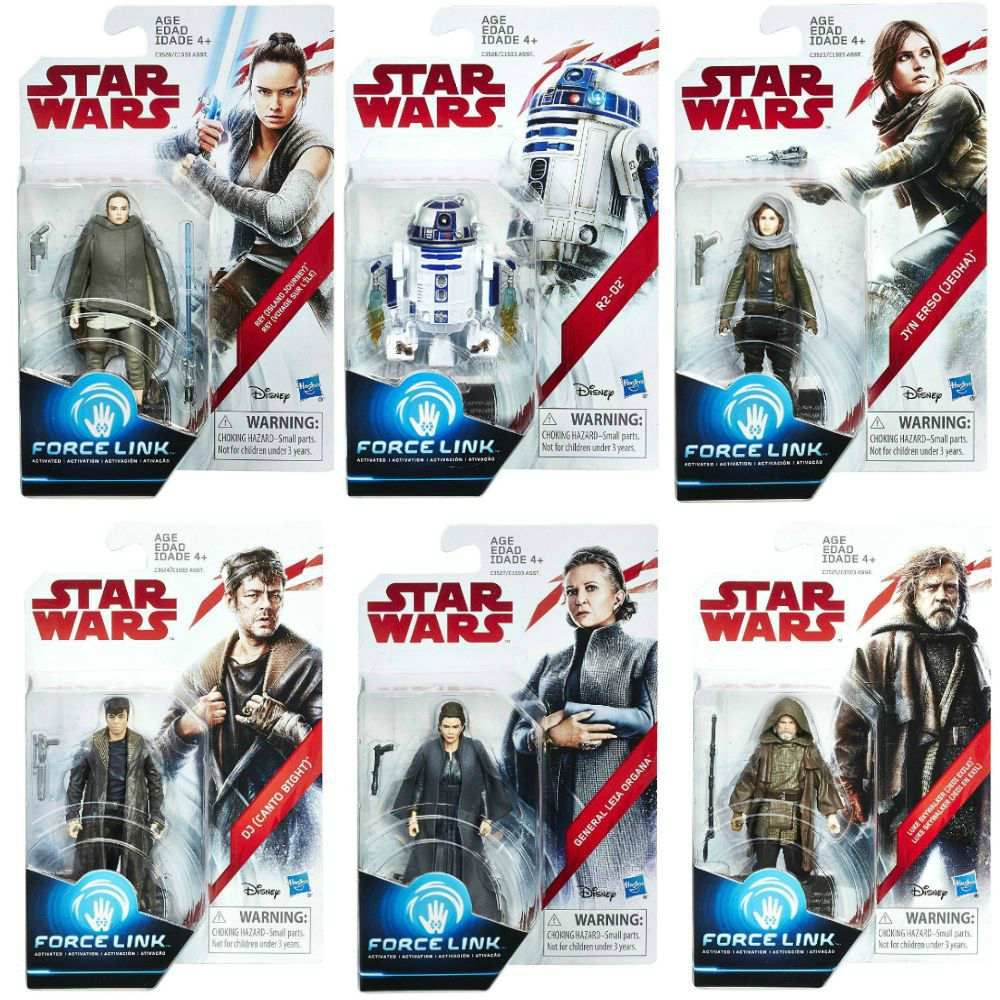
Image: Hasbro
“The Last Jedi figures were really good, but they were mostly characters that already existed for Force Awakens and that [collectors] may have already had on their shelf,” says Adam Pawlus, who has been writing about Star Wars toys on the internet since 1995, including an ongoing Figure of the Day blog, and works as a buyer for a major toy site. “[The move away from traditional figures] was heartbreaking! I’ve been collecting this junk since I was 2 1/2. It’s like all of a sudden they don’t have baseball cards.”
Some of the shift is pure economics. Star Wars products like toy lightsabers still do well at all levels, but younger audiences aren’t “necessarily gravitating toward action figures,” Pawlus notes. Baby Yoda aka Grogu aka The Child, for example, is a tiny action figure, but easy to manufacture as a life-size plush or animatronic, and it’s topped plenty of Hot Toys of 2020 lists in that form. But the homogeneity of Star Wars products isn’t limited to toys. More types of Star Wars products are available than ever, but they seem to draw from the same limited, familiar iconography. The Mandalorian and The Child have made it into a small, elite group of characters allowed to make constant appearances on clothing, posters, and cell-phone cases; that group also includes Boba Fett, Darth Vader, original-recipe Yoda, the droids, a few classic human characters like Luke, Han, and Leia, and the ubiquitous, all-purpose stormtrooper. Countless Star Wars products are basically just images of the same old helmets.
It may seem counterintuitive that the addition of five new movies and a popular TV show in quick succession would result in less character variety, but a wealth of new material means that licensees don’t need to draw from deep cuts to maintain fan interest, as they did back when there were only six movies.
“In 2006 to 2012 or so, the [toy] line was basically half top-tier characters and half weirdos for collectors, and it did great,” Pawlus says. “I think both of those pillars really drove things forward.” Now, with more genuine lead characters to choose from, there’s less of a reason to manufacture a plush Unkar Plutt or slap Zam Wesell on a T-shirt. If The Mandalorian itself is a de facto niche, its handful of most recognizable characters become visual ambassadors for that sub-brand. This is the way.
“[Adult toy collectors] have more money, and about the same impulse control as children.”
The demographic shift that emphasizes adult collectors makes sense to Pawlus: “We have more money, and about the same impulse control as children.” But older fans also sometimes have a more rigid sense of what Star Wars should be, and how collectibles should best represent that. The prequel trilogy first forced fans to grapple with their expectations for the series back in 1999, and in many cases, it sent them retreating into the comforts of the original trilogy.
Older fans are just as willing to reject the sequel trilogy, whether it’s on grounds of excessive fan service (The Force Awakens), excessive invention (The Last Jedi), or excessive evidence that movies aren’t pre-plotted like TV shows (The Rise of Skywalker). Re-releasing another round of Empire Strikes Back figures circumvents these arguments entirely; even bickering Star Wars fans can agree on the Darth Vader of their youth, right?
Brain Volk-Weiss, creator of the Netflix series The Toys That Made Us and a collector himself, considers these shifts in fandom preferences — whether it’s anti-sequel crabbing, pro-Mandalorian enthusiasm, or a mix-and-match approach — a natural part of the ebb and flow of large-scale storytelling. “I think sometimes the stories work and connect with the audience, and sometimes they don’t, and it affects toy sales… if people are passionate about the stories, they’re gonna be passionate about buying the toys.”
He also notes that cycles of demand for certain toys can take a while to catch up with evolving fandoms. While the prices of the oldest vintage Star Wars toys have finally started to dip, the prices of prequel action figures on the secondary market have been increasing since their bargain-bin days. “There are millions and millions of people now in their 20s and 30s who love Jar Jar Binks,” he points out.
The Mandalorian is often held up as proof that Star Wars fans can and will accept new stories in their canon right away if those stories are done “right.” But purely in terms of merchandising, the show actually fits into that original-trilogy feedback loop easily. Reduced to its most essential elements, the Mandalorian merch features reskinned versions of Boba Fett and Yoda, with different-colored armor and bigger, cuter eyes, respectively.
In particular, The Child is a delightful creation whose dialogue-free animatronic performance enlivens every episode of The Mandalorian. He’s also extremely, to use the fake marketing-speak word coined circa Batman & Robin, “toyetic.” He’s basically a Funko Pop figure come to life. No wonder The Mandalorian is so popular, and (so far) devoid of emotional resonance: It’s basically about two ultra-collectible toys traversing the galaxy in their perpetually broken and reassembled Lego ship.
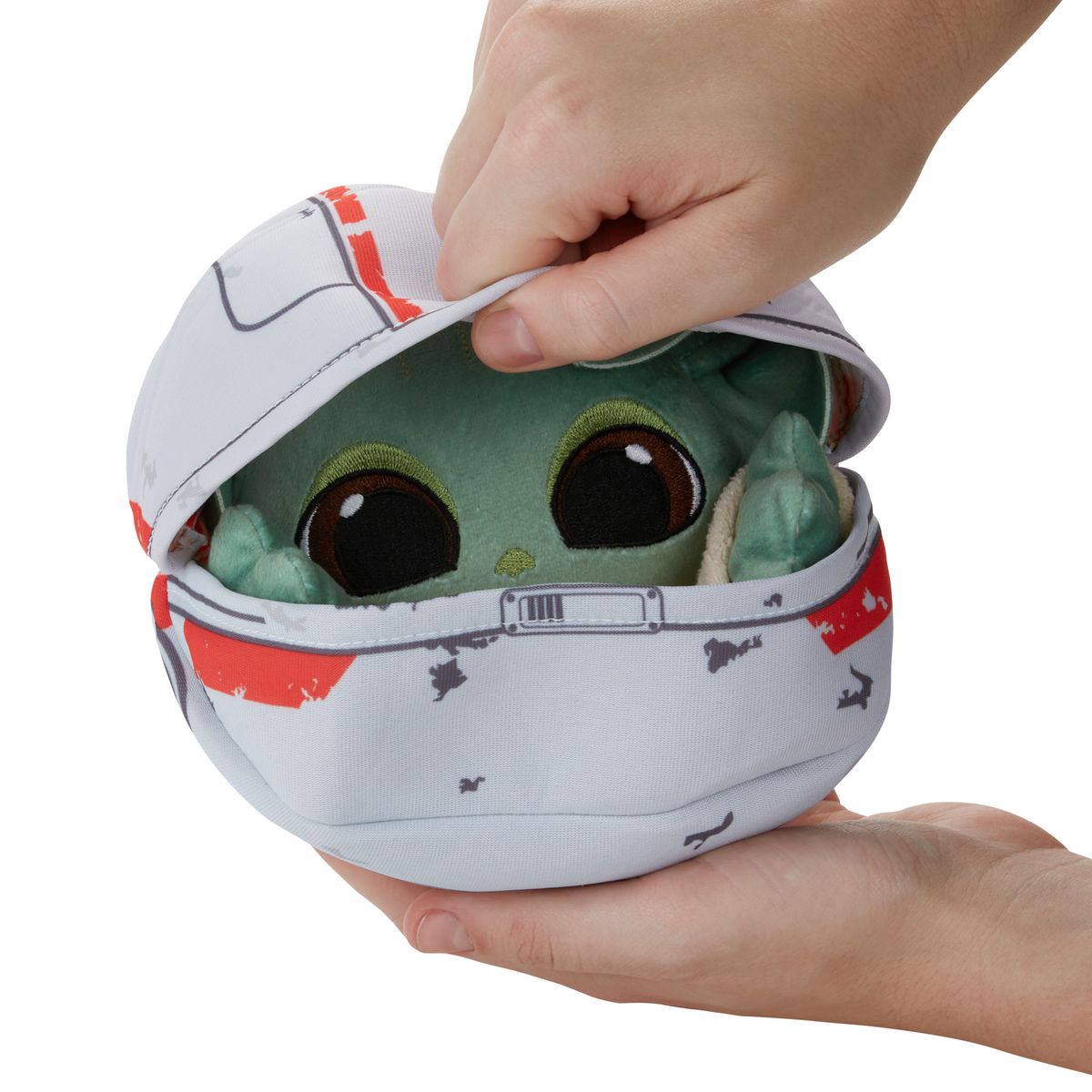
Photo: Hasbro
That isn’t a serious knock on The Mandalorian — at least not entirely. The first Star Wars was a scrappy, unlikely success story, but merchandising, and particularly kids’ toys, have been part of the series firmament for the vast majority of its existence. The success of the first six films led Lucasfilm to believe, sometimes with touching daftness, that the very expansiveness of its universe would be something fans might want to hold in their hands. (Check out eBay for the baffling, wonderful amount of merchandise emblazoned with images of Watto, the cantankerous slaver from Phantom Menace and Attack of the Clones.) And the company wasn’t wrong: The many ridiculous bit players available as action figures help fuel the whole franchise’s whimsical strangeness.
In that context, the lack of figures for the sequel trilogy, followed by the utter onslaught of Baby Yoda products, feels cautious and limited. Suddenly, a series that’s been boldly confident about naming and classifying every model of droid doesn’t seem to want to sell anything that lacks an instant recognition factor. Without the amusingly questionable importance conferred by an action figure, often packaged with an encyclopedia-level character name, the background aliens of newer Star Wars movies are more esoteric than ever, and the toys lose some of their specialness.
“The charm and enduring appeal of the line going all the way back to 1978 is down to producing weird aliens, droids, and background characters that would never have a prayer of being made in the more mainstream Black Series line,” Utrata says. He rattles off the crystal foxes from The Last Jedi, Pong Krell from The Clone Wars, Sebulba’s twin masseuses from The Phantom Menace, and any number of new Mandalorian characters as figures that would be unthinkable for the Black Series, but could be fun novelties for traditionally scaled action figure lines.
As a Star Wars fan and casual collector myself, I’m aware of the pitfalls of an adult rhapsodizing about cheap 4-inch toys from a multi-billion-dollar franchise — and worse, complaining about feeling insufficiently served by the newest incarnation of that franchise’s rampant consumerism. It feeds into a criticism often used to dismiss the series, especially from Return of the Jedi onward: all this fuss, over movies designed to sell toys.
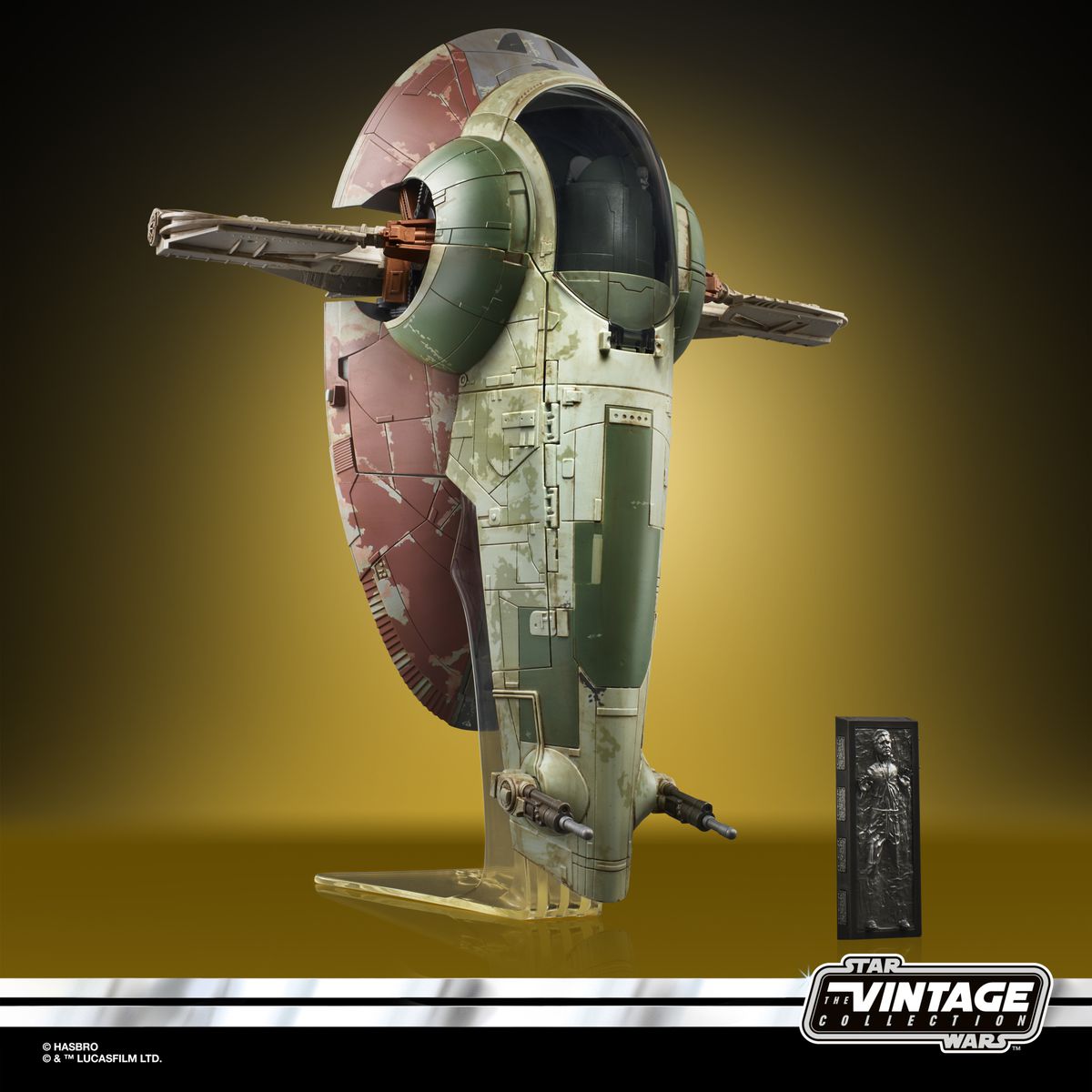
The Vintage Collection’s Slave I vehiclePhoto: Hasbro
Star Wars toys are indeed a business, and businesses don’t really care about people beyond their capacity to spend money. Hasbro would be manufacturing Aki-Aki by the thousands if they were likely to fly off shelves. Besides, the merchandising of Star Wars is, in many ways, endemic to the film industry’s toxic addiction to literal and figurative plastic — the way big-studio movies have turned into potential brands, accompanied by as many useless tchotchkes as any sports fandom. Paying for a ticket to a movie, even a ridiculous spectacle, at least feels on some level like an interaction with the arts, even more so now that we’ve been denied that pleasure for the better part of a year and counting. Paying for dozens of plastic representations of the characters on screen, though, is pure capitalist excess.
It’s also weirdly satisfying. At this point, the relationship between toys and Star Wars feels symbiotic, transcending traditional notions of purity. Star Wars is ridiculous pulp and an endless obsession. Like plastic action figures, it’s both disposable and permanent. There’s something sad about leaving action figures as an occasional bone tossed to adult collectors, rather than turning them into old-school fuel for kids’ imaginations. The spiritual successor to these old toys in terms of affordability and variety is probably Funko Pops, and they aren’t designed to be played with; they’re designed to sit on shelves or desks.
Adult collectors may yet wind up rescuing old-fashioned action figures: The recent success of collector-targeted projects like a crowdfunded Jabba’s Barge playset and Mandalorian’s Razor Crest ship, both designed to accompany 3.75” figures, has fans hoping that Hasbro may notice fans’ ongoing interest in the smaller-scale figures. This holiday season, though, the indestructible Star Wars merchandising armor continues to look awfully familiar. One of the most recent Mando Mondays included the announcement of, get this, a Black Series edition of a Mandalorian-era stormtrooper — in other words, another helmet-based non-character that draws on the iconography of the original trilogy. When so many of these products seek to recall that same old imagery, there’s less encouragement for younger fans to imagine their own offshoot adventures where prequel, sequel, original trilogy, and spinoff characters might interact in new ways.
With a whole series’ worth of cheap plastic figures, kids can engage in at-home fan service that maintains the joy of a J.J. Abrams movie, minus the antic desperation to please. Whenever a minor denizen of the Star Wars universe doesn’t reach action-figure status, they’re denied the chance to become the inexplicable main character of some kid’s self-directed adventures. Those homemade side adventures certainly aren’t required to enjoy the movies, Clone Wars, or The Mandalorian, all of which, to some degree, do the playing for you; to be clear, love of action figures isn’t some paid passport to “true” fandom. But kids mashing together characters from all corners of the galaxy helped keep Star Wars alive when there were no new movies on the horizon, and it could do the same now as the adult fandom splits off in different directions. For all the talk about which movies, books, or shows truly recapture the essence of the series, Star Wars feels least like itself when it’s standing motionless on a shelf.
